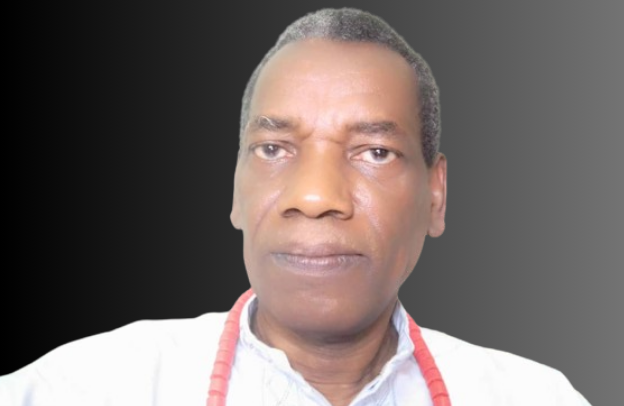African Presence In The Ancient World – Dr. Kiatezua Lubanzadio Luyaluka

In a UNESCO publication titled “Global Africa,” they delved into the theme of African Presence in the World, aiming to counter prevailing misconceptions about the contributions of Africans to the ancient world. This discourse also forms the centerpiece of today’s episode on the Obehi Podcast featuring Dr. Kiatezua Lubanzadio Luyaluka.
Want to learn more about storytelling? Start by downloading the first chapter of The Storytelling Mastery.
Dr. Luyaluka not only discusses African Presence in the ancient world but also challenges the notion that Europeans were the primary actors in shaping world history. He posits that Europeans arrived late on the global stage, prompting questions about their sudden claims of discovering rivers, lakes, and mountains only a few centuries ago.
The central question raised is: How come they only discover a world now if they have been part of it all these thousands of years?
African Is Where It All Began
Since the time of antiquity, Africa has stood as a pivotal crossroads of civilization, its people engaging in trade, cultural exchange, and the dissemination of knowledge far beyond its borders.
From the bustling markets of Alexandria to the bustling ports of Carthage, Africans were at the forefront of maritime trade, connecting the Mediterranean with the Indian Ocean and beyond.
One remarkable example of this global reach is the ancient kingdom of Kush, located in what is now modern-day Sudan. Renowned for its wealth, power, and sophisticated urban centers, Kushite kings such as Taharqa (690 to 664 BC) extended their influence into the Levant and even challenged the might of the Assyrian Empire. The Kushites were not only formidable warriors but also patrons of the arts and learning, fostering a rich cultural exchange with neighboring civilizations.
Meanwhile, across the Sahara Desert, the empires of West Africa flourished. The legendary city of Timbuktu, on the southern edge of the Sahara, was a center of learning and scholarship, attracting scholars from across the Islamic world and beyond. Its libraries housed priceless manuscripts on subjects ranging from astronomy to medicine, preserving the intellectual heritage of Africa for generations to come.
What about the great Benin Kingdom one of the oldest and most developed states in the coastal hinterland of West Africa? The Benin Kingdom grew out of the previous Edo Kingdom of Igodomigodo around the 11th century AD in present-day Nigeria. The Benin Kingdom lasted until it was annexed by the British Empire in 1897.
See also The Esan War Machine and the Foundation of Eko Lagos, Nigeria (Agba: The Esan God Of War, 3)
Further south, the Great Zimbabwe civilization stood up as a center of trade and innovation in southern Africa. Its impressive stone structures and intricate gold artifacts bear witness to a sophisticated society that engaged in trade with distant lands, including the Swahili coast of East Africa and the Indian Ocean trade networks.
However, the influence of Africans and the African diaspora extended even further afield. In ancient Greece, for example, the presence of Africans is well documented, with individuals like the philosopher Anaximander and the poetess Aspasia hailed for their contributions to Greek thought and culture. Only the founders of Greek and European phylosophers were educated in Africa and Egypt to be precise.
Similarly, in ancient Rome, Africans played prominent roles in both the military and civilian spheres. The Roman province of Africa, comprising modern-day Tunisia and parts of Algeria and Libya, was known as the “granary of Rome” for its fertile farmland and abundant harvests. Meanwhile, African soldiers, known as the “Mauri” and the “Numidians,” served in the legions of Rome and played a crucial role in the expansion and defense of the empire.
Even in distant lands such as China, evidence of African presence has been found, with archaeological discoveries suggesting that African merchants and envoys traveled along the ancient Silk Road, trading goods and ideas between East and West.
Thus, the concept of a global Africa transcends geographic boundaries and highlights the interconnectedness of human history. From the Nile Valley to the Mediterranean, from the savannas of West Africa to the jungles of Central America.
Africans and people of African descent have left an indelible mark on the ancient world, shaping its cultures, economies, and intellectual currents in ways that continue to resonate to this day.
See also Africans Must Learn That It’s “ALL ABOUT THE STRATEGY” – Selena Carty
Presentation by Dr. Kiatezua Lubanzadio Luyaluka
One of the problems with which the Black people of Africa have been confronted is the distortion and even outright negation of their history by the colonial authorities. Today, thanks to the use of DNA technology, new versions of the history of the whole of humanity are emerging. On the other hand, religion in ancient Egypt has been a knowledge that underpinned all the lore of the Blacks.
In this communication, we will use both African traditional religion (ATR) and the new discoveries brought by DNA study to understand the origin of the Black race and the scope and reason for its spread in the whole world starting from that which is the cradle of humanity: Africa.
Thanks to the Kemetic cosmological argument, ATR has been demonstrated since 2008 to be an exact science. This superior epistemic nature of religion has been kept in Bukôngo, the Kôngo religion. Using the KCA we will explain the presence of the Black in the ancient world. Thus, the KCA will be introduced summarily as follows:
- As an aggregate of individual entities, this temporal universe is an individual one.
- An individual temporal universe can only be the effect of an individual cause.
- Considering the infinity of possibilities, the individual nature of this cause begs the existence of other similar (effective or potential) causes, as many may have not yet created their respective universes.
- Here let me introduce a hypothesis, just for the sake of brevity: any creation is included in its creator.
- Based on this hypothesis, an entity exists that includes all the above-deduced causes, or creators; this entity is the greatest possible being, it is the Most High.
- The Most High must be indivisible and immutable since any principle of his divisibility and mutability must be greater than him; an impossible fact.
- The Most High must be transcendent, ie, he is above everything and doesn’t know evil. Due to his absolute indivisibility, in him to know and to be are the same thing. To know evil the Most High must be infinitely bad and infinitely good. This is an aberration.
- As a manifestation of the indivisible Most High, each creator (or each Child of the Most High) expresses his fullness. We call this fullness the Logos.
- This temporal universe cannot be in the Most High, due to his immutability. If it were, at the moment of creation something new will appear in the Most High; thus he will change. This change requires a principle of the mutability of the Most High. This principle must be greater than the Supreme Being, i.e., greater than the greatest possible being. This is impossible.
- This temporal universe cannot be outside of the Most High, for added to him, it will result in an entity greater than the greatest possible being. This is impossible.
- Therefore, the temporal universe is only a limited perception of the celestial reality in the temporal consciousness of the creator. This is the proof of the validity of our hypothesis.
- Thus, reality is spiritual. The material is just an appearance of reality. The real is the invisible. The visible is but its limited appearance.
- Let us here speak of the different planes of the universe. Like radio stations that are at the same place but their waves don’t mingle one with another due to the different frequencies, the eternal heaven and the different temporal planes are here in this same location.
However, each evolves in a precise individual state of consciousness. But, for the sake of clarity, we can schematize the different planes as follows:
LEGEND – A Is The Eternal Heaven
B is the zone of potential existence in the eternal heaven
D is the temporal plane
B & C represent the intermediary plane between the eternal heaven and the temporal plane
E is the zone of potential existence in the temporal plane.
Since the Most High manifests His fullness in the Children of God, this act is an expression of affection. Expressing infinite affection to an infinite number of Children, the Most High must be Love, the Principle of love.
Since the Most High is absolutely immutable, He cannot deprive the Child of His fullness, the Logos. Thus the Father-Mother is eternally loyal to the Children of God. Expressing a quality of truth (loyalty) infinitely to an infinite number of Children, the Father-Mother Principle of truth.
Therefore, the Children of God are endowed with free will as the consequence of the nature of the Most High as Love and Truth.
It ensures that as a Child of God misuses his free will, he turns away from the indivisible celestial reality, he loses all sense of substantiality. However, he cannot be annihilated, since this will bring a relational change to the absolutely immutable Most High. Thus, the fallen Child of God becomes a non-incarnated spirit groping in darkness and chaos in zone B of heaven, the zone of potential existence, before the appearance of zones C, D, and E.
Being deprived of the manifest expression of the Logos, the fallen Children of God cannot save themselves. Thus, creation required the descent of the creator into the temporal realm, precisely in zone B, to help the non-incarnated spirits take a temporal form and begin their ascension back to the eternal heaven.
With the descent of the Creator, zone B ceases to be a zone of potential existence, thus zones C, D, and E appear. The non-incarnated spirits fall in zone C.
Since it is the Most High that acts in the creator through the Logos, creation is performed in full respect of the free will of the fallen Children of God. Thus, as the Creator said, “Let there be light”, due to the exercise of free will, two extreme groups naturally appeared.
- Those who accepted light fully and unconditionally begin their ascension back to the eternal heaven. We call them Children of Light. They remained in the zone C. According to chromatic science, they were black; which is the color that absorbs all light. This color is confirmed by the Sumerians who teach that God created “Black Heads”.
- Those who rejected light totally to remain as demons in the new temporal universe were naturally white. They will fall in the zone D.
- It ensues also the existence of a middle group, that at this level we call hominines. They fell in zone D and separated also in two:
- The spirituality-minded who looked upward to divinities.
- And those who looked down, to rely on materialism.
It is obvious that the mix of the hominines and demons could only lead to confusion. The creator cannot descend below line L as he never misused his free will. The resolution of the confusion is thus the task of the Children of Light. The Sumerians refer to this stage of creation as one of the struggle between the gods (the Children of light) and the demons.
Descending in Zone D, Children of light chased the demons in Zone E and mixed their blood with the spiritually-minded hominines, now the Homo-Sapiens. This mixing of blood brought the different hues of the African Blacks and led to the constitution of the first solar civilization.
Ancient documents name these Children of Light: the Anunnakis or the Nephilines. Some Western scholars surmise that they were aliens. Fortunately, the Baganda of Uganda have the same myth (the myth of Kintu) and precisely affirm that they were Children of God (Ggulu) from heaven.
As for the second group of hominines, they could evolve only thanks to the Homo-Sapiens mixing their blood with them. Thus started the history of the Black’s civilizing presence all over the ancient world.
History confirms that the Homo-Sapiens were the first to appear on the earth, and new DNA technology attests that they never evolved toward humanity. As for the remaining hominines, they were found in Eurasia and America. They were in two groups:
- The Neanderthals started from the caves of Caucasia in Russia and crossed the straight of Bering to reach America.
- The Asian Denisovan originally lived in the Denisova Cave in the Altai Mountains in Siberia.
These two groups had to evolve from ape-like stature to humanity by mixing their blood with the African Homo sapiens.
From their African cradle, capitalizing on advantageous weather conditions, the Homo Sapiens spread over the world from the Middle East. But what we most seek here is to explain what motivated them to mix their blood with the lower group of hominines.
Modern history helps us understand this matter. According to the ancient Kemet and to the Sumerians, solar civilization (that of the Black) and lunar civilization (that of the White) take turn every three thousand years. However, the solar civilization lingers beyond its normal ending time.
The history of colonization and slavery teaches us the danger encountered by the solar civilization at the end of its cycle: the risk of extermination by the materialistic-minded hominines. Hence, the natural remedy for the Homo-Sapiens was to mix their blood with the Neanderthals and the Denisovans for the latter to be elevated to humanity.
This civilizing spread of the Homo-Sapiens is attested, for instance, when one considers the ancient statues of Buddha in Asia: they reveal obvious Black features when considered from their noses, mouths, and hair.
Now, it is a natural tendency for a people to always represent their Gods in his image. Thus the Black features of ancient Buddha inform us that the Homo-Sapiens were in high stand in old Asiatic societies and that they were nearly venerated.
In conclusion: the African people are the first human beings to appear on this earth. their original civilization is the result of mixing their blood with celestial visitors called Anunnaki or Nephelines.
This Children of Light taught the Blacks the essentials of civilization. For their protection in the periods of the hibernation of their civilization, the African Homo-Sapiens mixed their blood with the Neanderthals and Denisovans to elevate their humanity.
Want to learn more about storytelling? Start by downloading the first chapter of The Storytelling Mastery.






